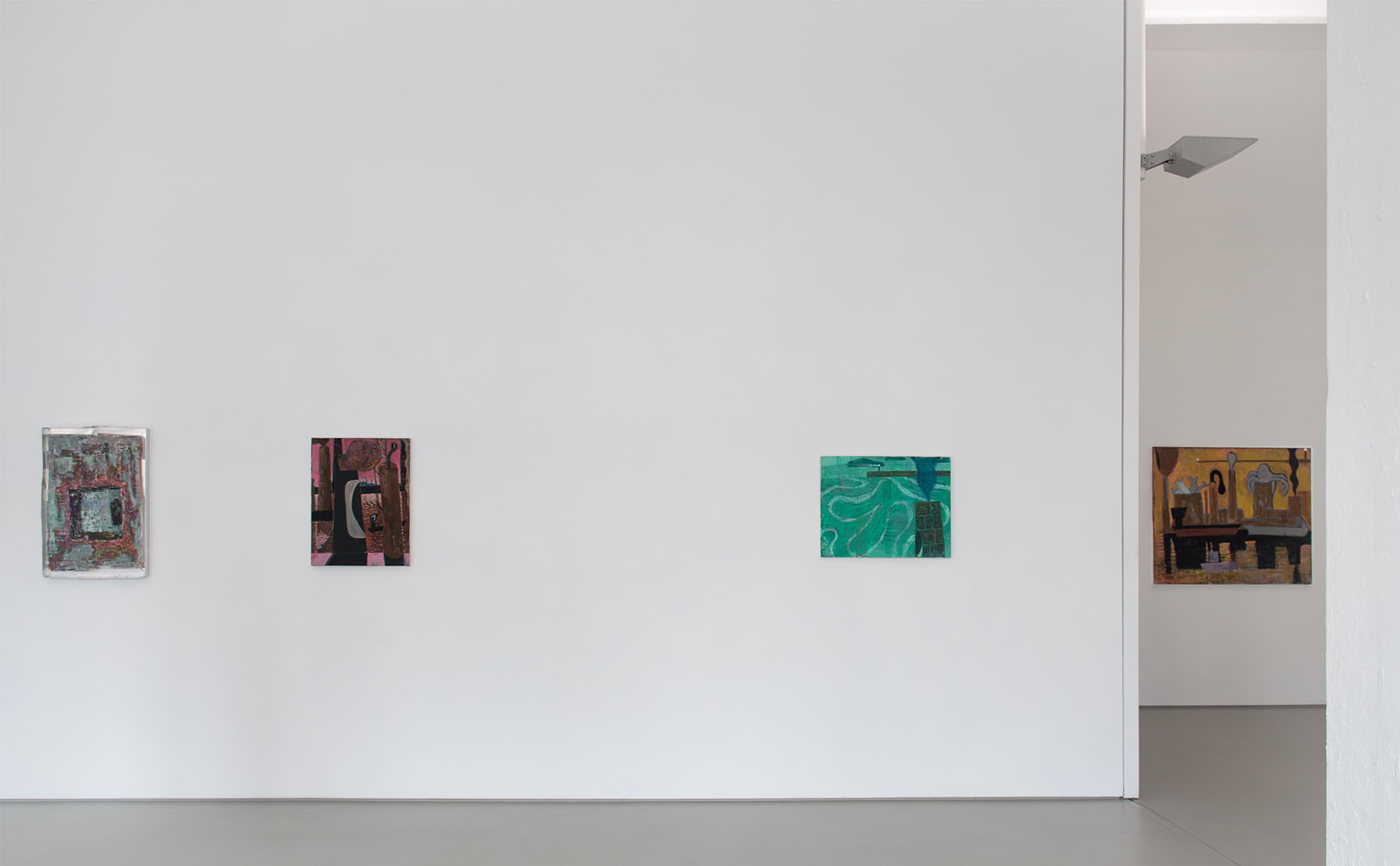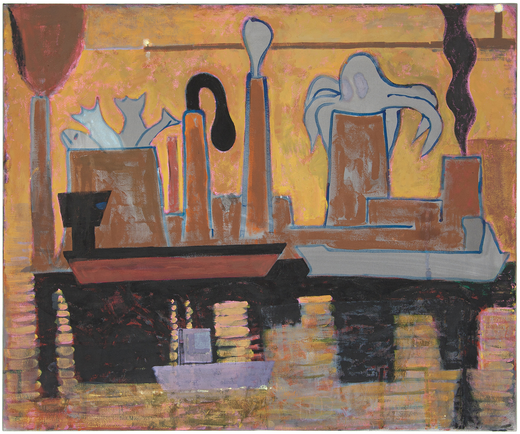“The first stretch could be anywhere,” Derk Thijs writes about the route to his studio in
IJmuiden. “From the station you keep on going straight, past two duplex houses standing behind
tidy hedges, then a field for dog walkers, a swimming pool and an elementary school. After that,
take a right onto a wide park flanked by antiseptic social housing, then a left onto Planetenweg at
the roundabout, a right onto Linneausstraat at Dekamarkt, and follow it until there are no more
houses. That’s when you’ll see the harbor sprawled out below like a messy kitchen.”
Located in the vicinity of that “messy kitchen” is the studio where Thijs has spent the past two
years working on new paintings and sculptures being shown at Galerie Onrust under the title
YM. He was overwhelmed by the ugliness, the shabbiness and, at the same time, the extraordinary beauty of this “transitional zone” in IJmuiden, where the sea churns up bubbles and froth,
and where an “oozy odor of fish and sediment lingers among the empty bottles and styrofoam
crates floating around.”
It’s a place where he often wondered whether he shouldn’t, after all, become an impressionist in
order to capture the fleeting and atmospheric light that gives a sensual glow even to the smokestacks and smelly exhaust fumes. But at times the silvery grey light of the sea yielded razorsharp
contours and prompted, no forced, the artist to situate the abundance of information in a more
rational and graphic image.
If anything characterizes the group of paintings and sculptures that Thijs has produced in IJmuiden, it would be the way in which he has linked those extremes, sometimes within a single work, and not infrequently by adding an alienating surrealistic element. Take, for instance, Untitled, 2018, a panorama of clearly defined smokestacks, one of which spews fish rather than clouds of smoke. Here the factory is a “living, breathing organism” from which amorphous forms pop up like extended telescopes and where a cartoonish giant squid occupies a cooling tower. But at the same time Thijs pretends that this of no concern as he paints, below it, an ephemeral impression of the
golden twilight – or is it smog? – reflected in the surging water.
In another work he focuses on a composition of boats and dockland buildings, though these are no
more than volumes in hues of grey. Every element falls into place here. This is Morandi-meets-De
Chirico and Guston-meets-Léger, and yet again, without a doubt, Derk Thijs playing with light and
form. Here he combines the two seamlessly, like a puzzle, in an almost velvety work. In contrast to those constructed realities, Thijs sometimes appeals directly to the senses and
suddenly conjures forth, from a shimmering of reddish pink hues, a boat, a mooring post and a small crab. Plus another strange creature, an all-seeing Eye, which surveys the image with us,
although we will never be able to interpret it completely.
The diversity of works in YM is a reflection of IJmuiden, where Thijs acts as the observer, fascinated by its stench-producing factories and the massiveness of the fishing industry, by the beauty
of its light and the practical layout of the docklands that planning authorities have yet to control.
But it is also the place where he dreams and muses about the sea, about Venus, the goddess of
love who sprang from a shell, about the sea’s promise of love and the (im)possibility of portraying that, despite the fact that his sculpture of a gentle, fish-like mythical creature framed by
aluminum – Giacometti! – seems to be an endearing attempt to do so. Actually, says Thijs, all of
those different works are guarded rituals that keep this promise alive.
The quotes in this text have been taken from Derk Thijs’s Lowly Worm & Aphrodite - Sense that
sees itself is spirit, in which he describes his experiences and thoughts with regard to IJmuiden in
an idiosyncratic manner.
text: Esther Darley
translation: Beth O’Brien

